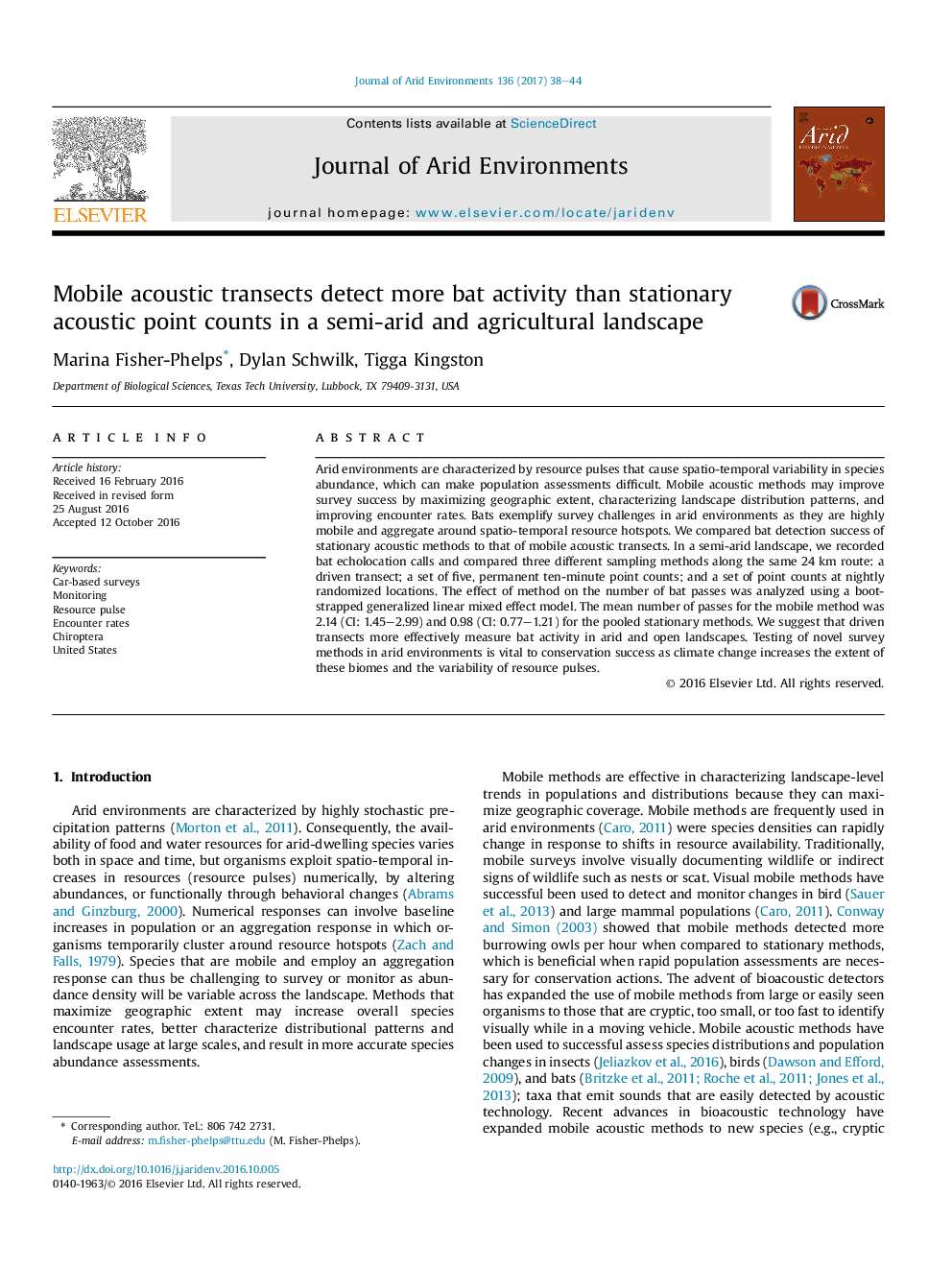| Article ID | Journal | Published Year | Pages | File Type |
|---|---|---|---|---|
| 6303089 | Journal of Arid Environments | 2017 | 7 Pages |
Abstract
Arid environments are characterized by resource pulses that cause spatio-temporal variability in species abundance, which can make population assessments difficult. Mobile acoustic methods may improve survey success by maximizing geographic extent, characterizing landscape distribution patterns, and improving encounter rates. Bats exemplify survey challenges in arid environments as they are highly mobile and aggregate around spatio-temporal resource hotspots. We compared bat detection success of stationary acoustic methods to that of mobile acoustic transects. In a semi-arid landscape, we recorded bat echolocation calls and compared three different sampling methods along the same 24Â km route: a driven transect; a set of five, permanent ten-minute point counts; and a set of point counts at nightly randomized locations. The effect of method on the number of bat passes was analyzed using a bootstrapped generalized linear mixed effect model. The mean number of passes for the mobile method was 2.14 (CI: 1.45-2.99) and 0.98 (CI: 0.77-1.21) for the pooled stationary methods. We suggest that driven transects more effectively measure bat activity in arid and open landscapes. Testing of novel survey methods in arid environments is vital to conservation success as climate change increases the extent of these biomes and the variability of resource pulses.
Related Topics
Physical Sciences and Engineering
Earth and Planetary Sciences
Earth-Surface Processes
Authors
Marina Fisher-Phelps, Dylan Schwilk, Tigga Kingston,
